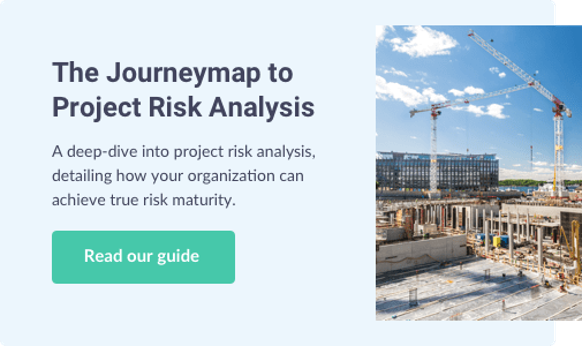Wisdom is knowing when to update beliefs and revise original plans. While this may seem straightforward, it often goes against human instincts. Many take pride in their knowledge, holding steadfast to their beliefs, especially in leadership roles. However, in today's ever-changing world, where the only certainty is change, embracing continuous improvement becomes paramount.
For decades, project management conventions have described projects using single-point cost and schedule estimates, implying an unwarranted level of confidence. This can lead to overconfidence or wishful thinking, with some leaders questioning the need for contingency funds. A better practice involves scrutinizing all available data and quantifying known risks more accurately through stochastic analysis. This allows teams to appreciate the full range of likely outcomes and fund contingencies aligned with their risk appetite.
Eliminating Overconfidence: Bias and the Overconfidence Cycle
In, "Think Again," Adam Grant highlights the overconfidence cycle where bias validates beliefs, inflating the ego, and reinforcing convictions. Philip Tetlock and Dan Gartner’s “Superforecasting” further illustrates that poor forecasting skills often stem from an unwillingness to change one’s mind. On the other hand, pragmatic experts, committed to continuous improvement, gather diverse data, acknowledge uncertainties, and adapt to them. Tetlock calls this commitment to self improvement and belief updating “perpetual beta.”
In project management, teams embracing continuous improvement collect diverse, relevant risk data, promoting doubt and intellectual humility in a rethinking cycle. This openness to new approaches allows teams to overcome biases and improve decision-making.
The Essence of Continual Improvement
Continuous improvement involves ongoing enhancements to products, services, or processes. It seeks incremental improvements over time but can also include breakthrough improvements that occur all at once.
Choosing Courage Over Comfort in Project Management
Relevant data should prompt courage over comfort, and project teams should be encouraged to champion uncertain thinking, which involves potentially revising plans amid dynamic, unforeseen conditions. The project controls community should recognize the limitations of referring to predetermined accuracy ranges, shifting towards more accurate estimate expressions using tools like Safran Risk's Monte Carlo simulation. This tool articulates estimate accuracy as a percentage range at the 90% confidence interval, a significant improvement over traditional methods.
What Makes for Successful Risk Management
Effective project teams challenge internal views. Best practices, adopted by government procurement agencies globally, include running QRA (quantitative risk analyses) in parallel with secondary models to provide an independent, outside view. Advances in machine learning now offer opportunities for an independently generated outside view from the bottom up, allowing more frequent, automated risk analyses.
Embracing Doubt and Continuous Improvement with Safran Risk
Doubt and continuous improvement are your allies in disruptive times. Teams need cutting edge software tools like Safran Risk to capture and review data from a range of sources. For organizations seeking a trusted advisor to discuss assumptions and internal challenges, contacting Safran is a step towards embracing continuous improvement.
In summary, continuous improvement in project management is indispensable in today's dynamic world. Overcoming overconfidence through a rethinking cycle, challenging biases, and choosing courage over comfort are keys to success. By adopting continuous improvement practices, project teams enhance their adaptability and thrive amidst constant change.
What's Next?
If your organization is facing uncertainty with projects, and seeking ways to embrace continual improvement, our top tier software tools can help you manage critical project risks. If you want to optimize your organization’s ability to manage successful projects, contact us to find out more about Safran Risk, and let us tailor a strategy so you can improve your risk management capability with the guidance of a trusted advisor.



